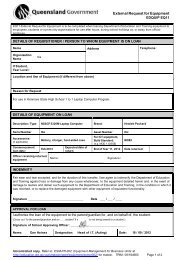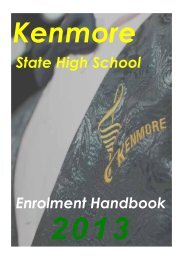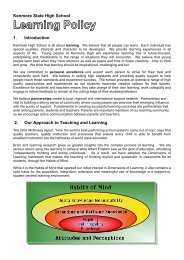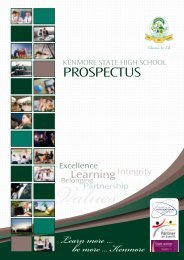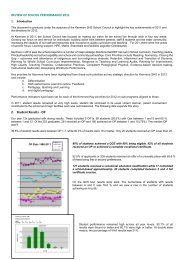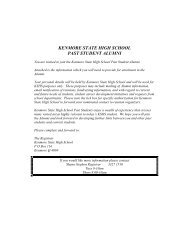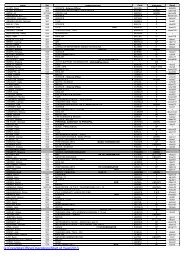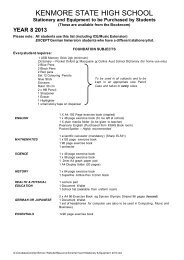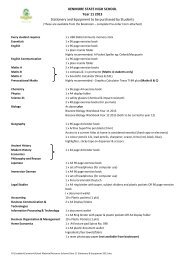QCE Handbook - Queensland Studies Authority
QCE Handbook - Queensland Studies Authority
QCE Handbook - Queensland Studies Authority
You also want an ePaper? Increase the reach of your titles
YUMPU automatically turns print PDFs into web optimized ePapers that Google loves.
3.4 VET — a clarification<br />
VET approach Characteristics Important to know<br />
Study Area<br />
Specifications (SASs)<br />
Approach C<br />
For example:<br />
• Business<br />
• Hospitality<br />
• Recreation<br />
<strong>Authority</strong> subjects<br />
with embedded VET<br />
<strong>Authority</strong> subjects:<br />
• Business,<br />
Communication and<br />
Technologies<br />
• Hospitality <strong>Studies</strong><br />
• Information<br />
Technology <strong>Studies</strong><br />
• Tourism<br />
Nested VET<br />
certificates<br />
• Two semesters of an<br />
<strong>Authority</strong>-registered subject<br />
contribute up to 2 credits to<br />
Core (but do not contribute<br />
to completed Core courses).<br />
• The VET Certificate I<br />
(completed over 2<br />
semesters) may contribute 2<br />
or 3 credits in the<br />
Preparatory learning<br />
category.<br />
• These courses can<br />
contribute to the completed<br />
Core requirement.<br />
• Completed courses<br />
contribute 4 credits towards<br />
the award of a <strong>QCE</strong>.<br />
• If these subjects are<br />
partially completed, the<br />
credit that contributes is the<br />
higher earned by either the<br />
VET component or the<br />
<strong>Authority</strong> subject.<br />
• Nested competencies in<br />
certificates provide students<br />
who need to leave the<br />
course with a variety of exit<br />
points without complete<br />
penalty.<br />
• The competencies for<br />
Certificate I are included in<br />
those required for Certificate<br />
II, which are further included<br />
in the competencies<br />
required for Certificate III.<br />
These subjects do not contribute to the<br />
requirement of 12 credits from<br />
completed Core courses.<br />
For partially completed courses with<br />
embedded VET, the credit associated<br />
with each of the <strong>Authority</strong> subjects and<br />
the VET component is calculated, and<br />
the higher credit applies.<br />
For example:<br />
A subject exited after 3 semesters at a<br />
Sound Level of Achievement or higher<br />
contributes 3 credits towards a <strong>QCE</strong>.<br />
If all of the competencies for the VET<br />
Certificate II have been completed at the<br />
end of the 3 semesters, the subject will<br />
contribute 4 credits towards a <strong>QCE</strong>.<br />
Should a student be enrolled<br />
concurrently in both an <strong>Authority</strong> subject<br />
with embedded VET, and the same<br />
separate VET certificate, a maximum of<br />
4 credits will apply for the combination.<br />
For <strong>QCE</strong> purposes, the intent of nested<br />
certificates is to allow a student who<br />
withdraws from a Certificate III course to<br />
attain one of the lower qualifications,<br />
provided sufficient competencies have<br />
been demonstrated.<br />
The total amount of credit associated<br />
with most Certificate III courses is 8<br />
credits towards a <strong>QCE</strong> (5, 6 or 7 credits<br />
for some courses). In the event of<br />
withdrawal from the Certificate III the<br />
lower Certificate II course would<br />
contribute 4 credits and the Certificate I<br />
course would contribute 2 credits<br />
towards a <strong>QCE</strong>.<br />
<strong>Queensland</strong> <strong>Studies</strong> <strong>Authority</strong> August 2011 | 17



